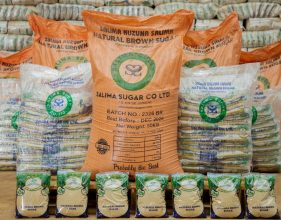Malawi rakes in $57m in agoa
Malawi is not a mere spectator in the African Growth and Opportunity Act (Agoa) programme, after shipping to the United States (US) $57.6 million (K25.6 billion) worth of goods in 2014 compared to previous years’ $47 million (K21.1 billion), Business News has learnt.
Although Malawi shipped in more textiles, the country failed to be among the top 10 leading Agoa beneficiaries—a sign that the country needs to do more to capitalise on the programme.

Newton Kambala, president of the Malawi Confederation of Chambers of Commerce and Industry (MCCCI) believes Malawi can export more to Agoa market if government built capacity of local manufacturers.
According to an Agoa report released Thursday by the US government, leading beneficiary countries are Angola, Nigeria, Chad, Gabon, Kenya, the Republic of Congo, Lesotho, and Mauritius. Most of these led with oil exports.
South Africa is the largest non-oil Agoa beneficiary.
Since its inception in 2000, the Agoa programme has helped African beneficiary countries to expand and diversify their exports to the US.
Products from Agoa-eligible countries enter the US market duty-free. The US allows agricultural products, metals, footwear, and certain chemicals.
Currently for Malawi, textiles are a dominant export product in Agoa.
Hence, Kambala said government should go beyond rhetoric and stating the obvious to grow local firms if the country is to export more than textiles and benefit more Agoa.
He said: “When we say grow local firms I do not mean handouts, but creating an enabling environment for local firms to compete and grow. The opportunity in Agoa is there, but the problem is that we are not assisted, government owes the private sector a lot of money [more than K175 billion], the bank rates are prohibitive and stifling businesses.”
Kambala said the government has failed to address barriers to investment such as unreliable power, water shortages, poor telecommunications infrastructure, and the high costs of services.
“These are key issues that should be addressed if we are to take advantage of Agoa,” he added.
By providing new market opportunities for African exports—especially of non-traditional and higher-value products—Agoa has helped African firms to become more competitive internationally, thereby bolstering African economic growth and helping to alleviate poverty in one of the poorest regions of the world.
Malawi export trend has not been so impressive in the past 10 years with the country shipping $29m worth of goods in 2006, $27 million in 2007 and $26.6 million in 2008. Malawi made $39.7 million in 2009, $47 million in 2010 before hitting $56 million in 2011, according to the report.
In 2012 the country raked in $46.3 million before registering $47 million in 2013.
The report says so far total US imports in 2014 under Agoa fell 52.2 percent from $24.8 billion to $11.8 billion, due in most part to a large drop in imports of mineral fuels and motor vehicles and their parts.
On May 27 2009, the US started to provide duty-free treatment to eligible products of certain sub-Saharan African countries under Agoa.
Initially, Agoa was set to expire on September 30, 2015 but early this month the deal was extended for another 15 years.





